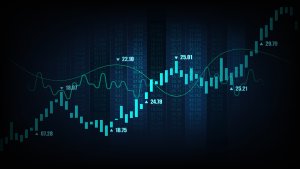Navigating the Fluctuations of the USD to AUD Exchange Rate
The USD to AUD exchange rate is a crucial financial indicator, impacting trade, investment, and economic sentiment between the United States and Australia.

In the interconnected world of global finance, the exchange rate between the US dollar (USD) and the Australian dollar (AUD) serves as a critical economic indicator, influencing not just trade and investment flows between the United States and Australia but also offering broader insights into global economic health. The USD to AUD exchange rate is closely monitored by businesses, investors, and policymakers alike, as it affects international trade, investment returns, and economic sentiment in both countries.
Several factors drive the fluctuations of the USD to AUD exchange rate, including interest rate differentials, commodity prices, and global economic conditions. Interest rates set by the Federal Reserve (Fed) in the US and the Reserve Bank of Australia (RBA) have a significant impact. Typically, if the Fed raises interest rates while the RBA holds or lowers rates, the USD strengthens against the AUD, and vice versa. This is because higher interest rates offer investors higher returns on investments denominated in that currency, making it more attractive.
Commodity prices also play a pivotal role, given Australia’s economy is heavily reliant on the export of natural resources such as iron ore, coal, and gold. When commodity prices are high, the AUD often strengthens against the USD, as global demand for Australian exports increases, leading to more AUD being bought on the foreign exchange markets.
Global economic conditions and investor sentiment toward risk also influence the USD to AUD exchange rate. The USD is often seen as a “safe haven” currency, meaning that in times of global economic uncertainty or market volatility, investors flock to the USD, increasing its value against other currencies, including the AUD. Conversely, when the global economic outlook is positive, investors are more willing to take on risk and invest in “riskier” currencies, which can lead to the AUD strengthening against the USD.
The trade balance between the United States and Australia can further affect the exchange rate. If Australia exports more to the US than it imports, it means there is higher demand for the AUD, potentially strengthening its value against the USD. On the other hand, a trade deficit with the US could weaken the AUD.
For businesses operating in both countries, understanding the dynamics of the USD to AUD exchange rate is crucial for pricing strategies, financial planning, and managing currency risk. Companies engaging in import-export activities must closely monitor exchange rate movements to optimize their pricing strategies and protect profit margins. Investors, too, must consider exchange rate trends when investing in assets denominated in foreign currencies, as fluctuations can significantly impact investment returns.
Currency traders and speculative investors often seek to profit from volatility in the USD to AUD exchange rate. By analyzing factors such as interest rate differentials, economic data releases, and geopolitical developments, traders make educated guesses about future movements in the exchange rate.
In conclusion, the USD to AUD exchange rate is influenced by a complex interplay of economic, financial, and geopolitical factors. For anyone involved in international trade, investment, or finance, keeping a close eye on this exchange rate is essential. It not only provides insights into the economic relationship between the United States and Australia but also reflects broader global economic trends. As the world economy continues to evolve, the importance of understanding the dynamics of the USD to AUD exchange rate remains paramount for making informed financial decisions.









